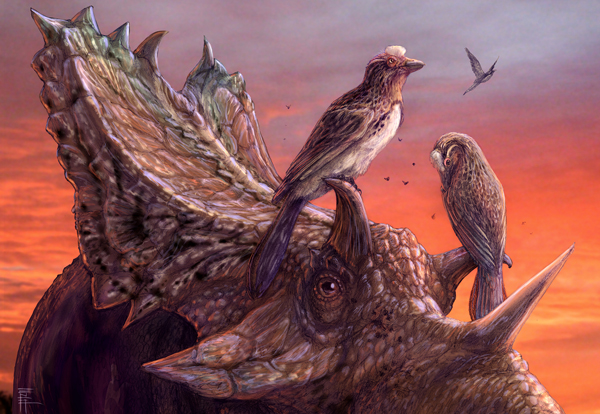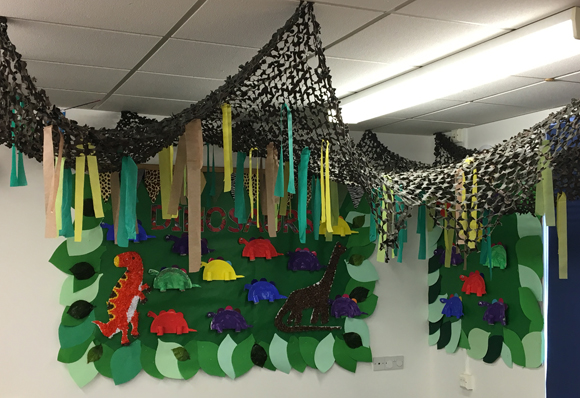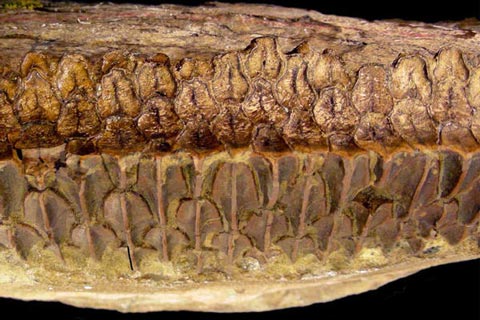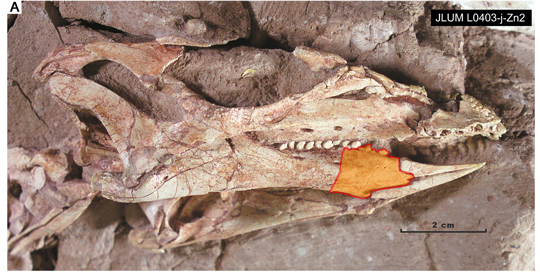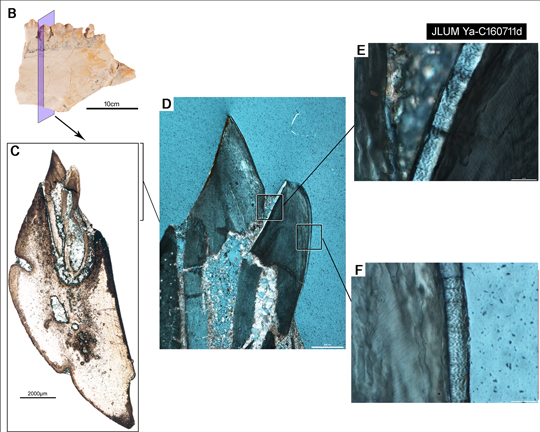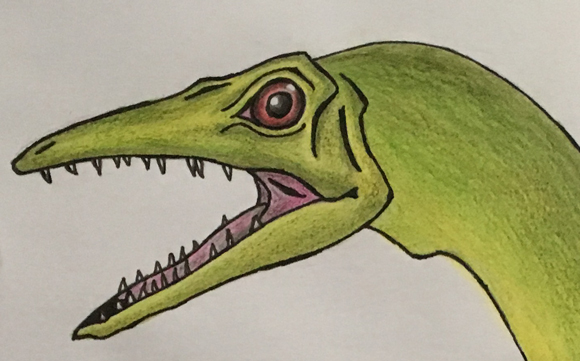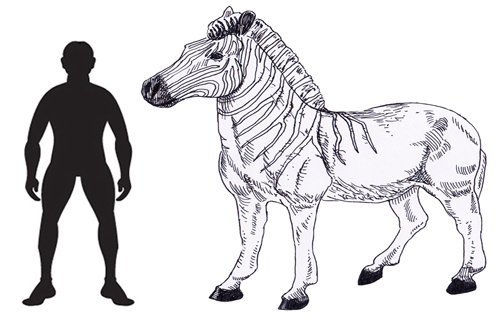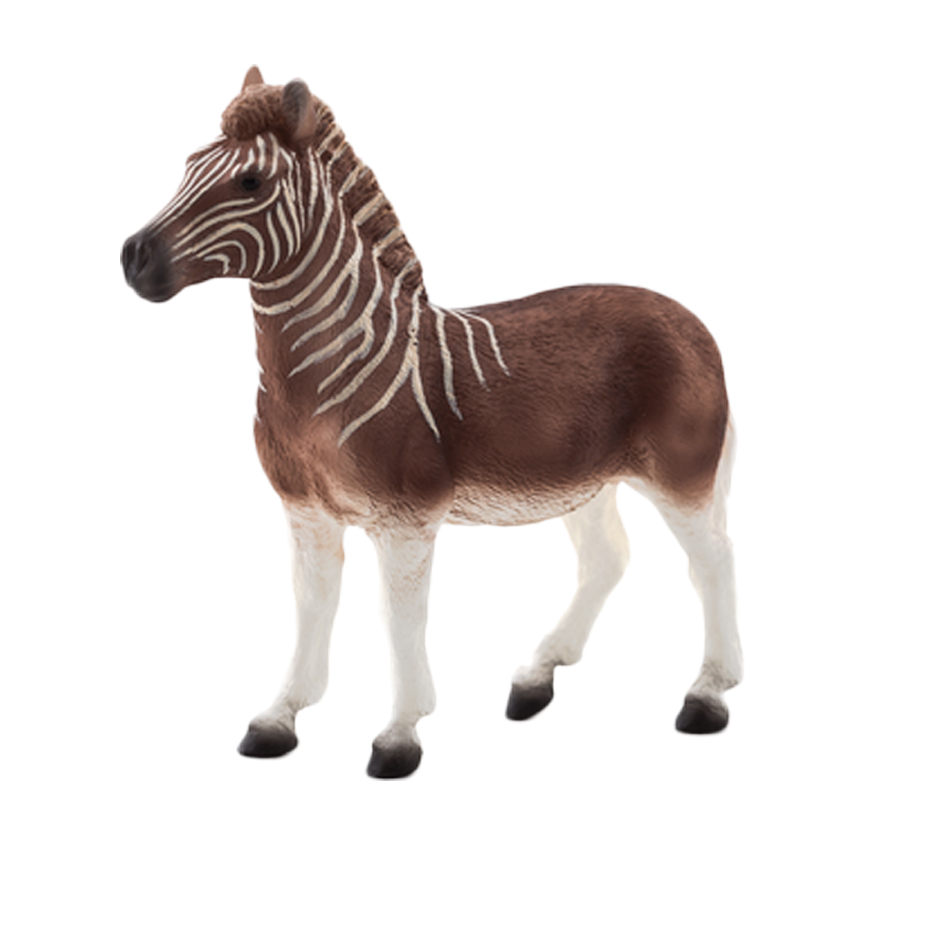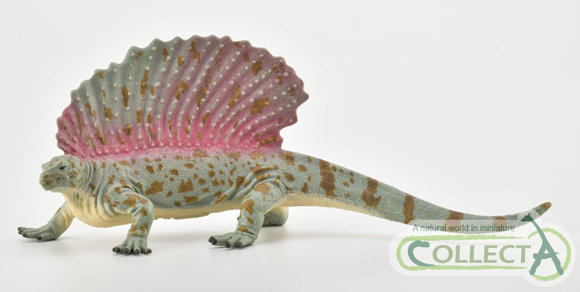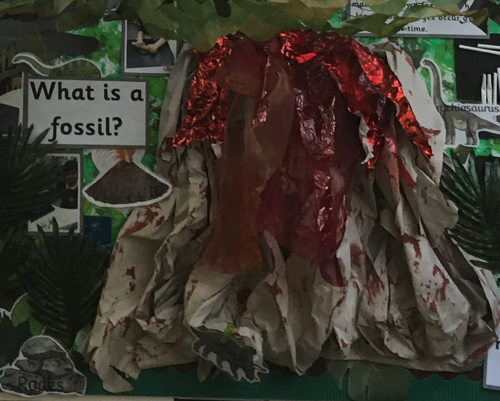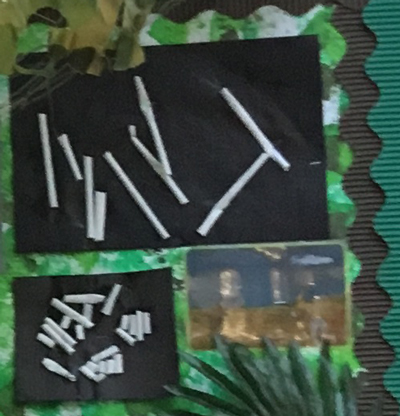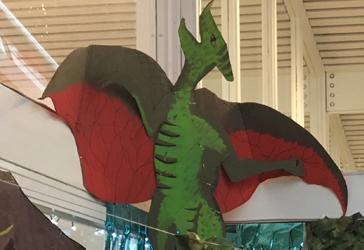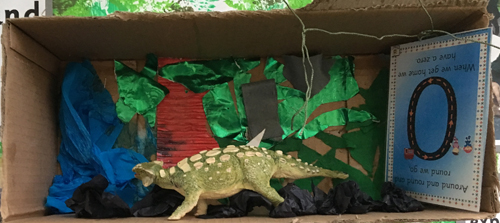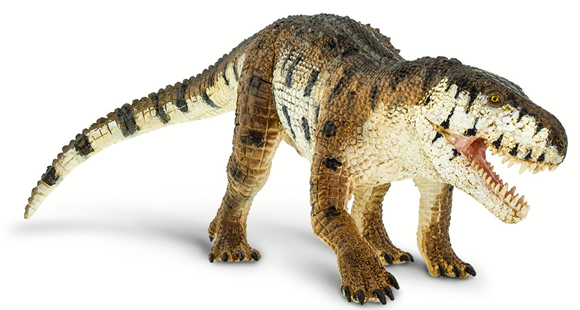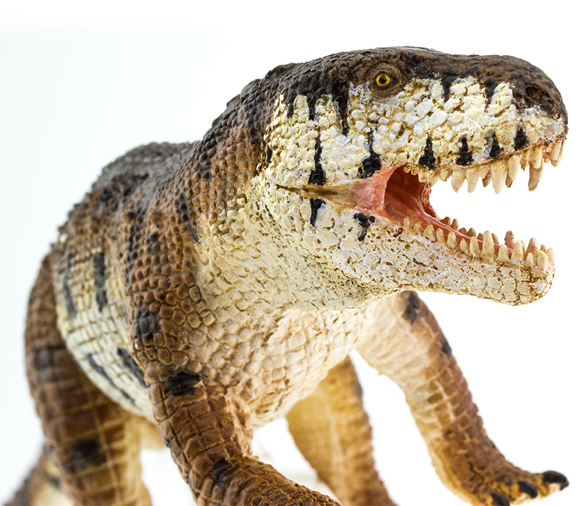Fossil Bird from Late Cretaceous Utah – Deepens a Mystery
Mirarce eatoni – Deepens the Mystery Over Late Cretaceous Avian Extinctions
All living birds from Albatrosses to Zebra finches belong to one group of avians – the Neornithes. Our feathered friends share a number of key anatomical traits that defines them as a group from the smallest such as the Bee Hummingbird to the largest living bird, the Ostrich. However, back in the Cretaceous, things were very different. There were several different taxa of birds including the very diverse and highly successful enantiornithines that shared the skies with early members of the neornithines, but only the ancestors of today’s extant birds survived the end-Cretaceous extinction event and that’s a puzzle for palaeontologists.
The puzzle has just become a little more complex with the publication of a scientific paper in the on-line, open access journal “PeerJ”. This paper describes the fossilised remains of an enantiornithine that lived around 75 million years ago, in Utah (USA). This prehistoric bird, about the size of a Raven, has been named Mirarce eatoni and its fossils show that it was probably a match for most modern birds in terms of its aerial abilities.
Perched on the Horns of a Utahceratops (Mirarce eatoni)
Picture credit: Brian Engh
This leads to one very intriguing question, if enantiornithines like Mirarce were so advanced, then why after the Cretaceous-Palaeogene mass extinction event did only one group of birds survive?
A Complete Anatomical Description
The fossil material consists of several neck bones (cervical vertebrae), back bones (dorsal vertebrae), the fused caudal vertebrae making up the pygostyle, elements from the limbs, parts of the hips, a partial scapula, coracoid, the furcula (wishbone) and several other fragmentary elements including the radius and ulna.
This represents a veritable treasure trove of North American enantiornithine fossils for palaeontologists to study, most North American members of this taxon are known from very scrappy fossil remains, mostly consisting of isolated fused leg bones and toes. All in all, about 30% of the total skeleton is known and crucially, unlike most of the more complete enantiornithine specimens from the Lower Cretaceous deposits of China, this specimen, is preserved in three-dimensions, it has not been crushed as flat as a pancake. The excellent state of preservation and the number of fossil bones has permitted the researchers to undertake a complete anatomical description.
A Skeletal Reconstruction of the Newly Described North American Enantiornithine Mirarce eatoni
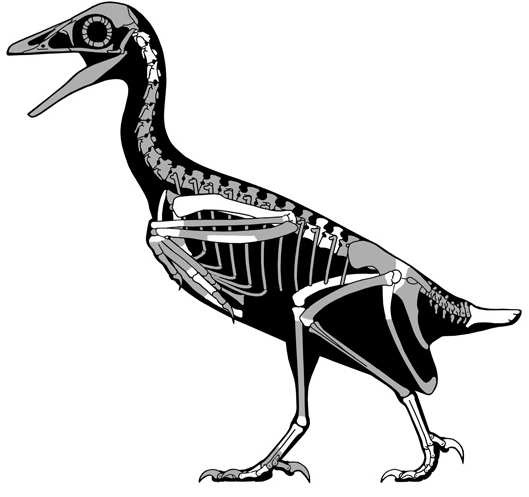
Picture credit: Scott Hartman
The “Kaiparowits Avisaurid”
The specimen was originally discovered back in 1992, by University of California, Berkeley palaeontologist Howard Hutchinson, whilst he was exploring Kaiparowits Formation deposits for evidence of turtles.
It was quickly identified as an enantiornithine and ascribed to the Avisauridae family, a family of prehistoric birds known from South America, North America, parts of Europe, Siberia and the Middle East (Lebanon). The partial skeleton (UCMP 139500), was nicknamed the “Kaiparowits avisaurid”. Although, its significance was noted, after all, the fossils represent the most complete example of an enantiornithine ever found in North America, it remained undescribed. All that changed when PhD student Jessie Atterholt (University of California, Berkeley), was given the opportunity to provide a formal scientific description.
Research Suggests that Mirarce eatoni was a Strong Flier and Well-Adapted to Life in the Late Cretaceous

Picture eredit: Brian Engh
A Strong and Capable Flier
In collaboration with her colleague Howard Hutchinson and with the support of Jingmai O’Connor, from the Chinese Academy of Sciences and an authority on Cretaceous fossil birds, a complete analysis of the fossil bones was undertaken. This study revealed that M. eatoni possessed several of the same physical adaptations for highly refined powered flight that modern birds (Neornithines) have.
Fossils of Enantiornithines from the Lower Cretaceous of China, birds such as Confuciusornis sanctus show a mix of basal and more advanced anatomical traits. For example, the breast bone (sternum), of C. sanctus, is relatively small. Modern birds have a deeply keeled sternum, this allows the attachment of large muscles to aid powered flight. The wishbone (furcula) of Confuciusornis and most other Early Cretaceous enantiornithines, is little more than a curved bar. However, the furcula of M. eatoni is shaped much more like the “V-shaped” wishbones of modern birds. The furcula of Mirarce would have been able to flex and to store energy released during the flapping of the wings.
Commenting on the significance of these anatomical characteristics, Atterholt stated:
“We know that birds in the early Cretaceous, about 115 to 130 million years ago, were capable of flight but probably not as well adapted for it as modern birds. What this new fossil shows is that enantiornithines, though totally separate from modern birds, evolved some of the same adaptations for highly refined, advanced flight styles.”
The Furcula (Wishbone) of Mirarce eatoni
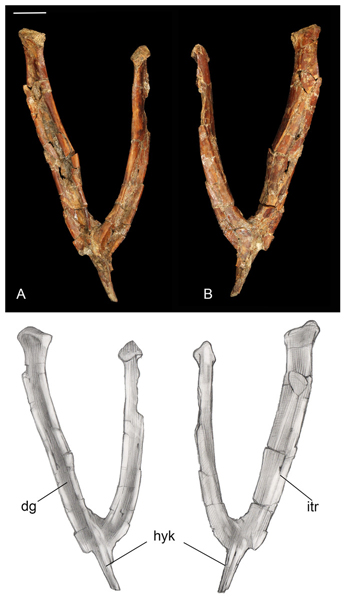
Picture credit: PeerJ
Quill Knobs?
A close examination of the right ulna (lower arm bone), revealed evidence of two roughened patches preserved on the shaft of the bone. These rough patches were interpreted as being attachment sites for quill knobs, that anchor the wing feathers to the skeleton and to help strengthen the wings for use in active, prolonged, powered flight. Quill knobs are found in living birds. This is the first time that such a feature has been seen in an enantiornithine and indicates that Mirarce was, very probably, a strong flier.
Potential Quill Knobs Identified in an Enantiornithine (M. eatoni)
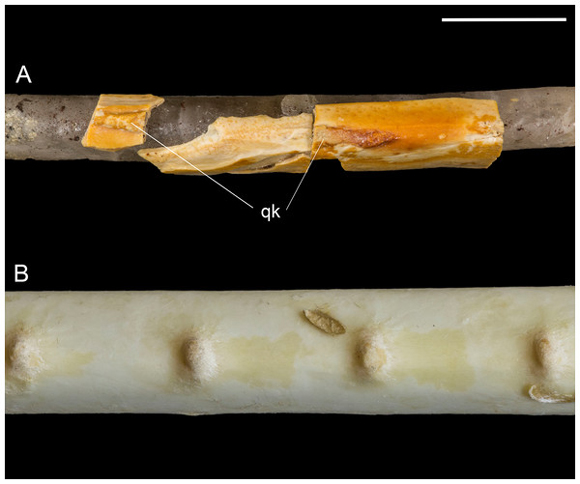
Picture eredit: PeerJ
If these structures are quill knobs, then this suggests that this anatomical trait evolved in parallel with members of the Dinosauria (dromaeosaurids and other maniraptorans along with the ornithomimids) and in parallel with a number of types of prehistoric bird.
How Did Mirarce eatoni Get its Name?
The genus name reflects that fantastic state of preservation of the fossil material (Latin “mirus” for wonderful) and after Arce, the winged messenger of the Titans in Greek mythology. The trivial name honours Dr Jeffrey Eaton, in recognition of his work studying the vertebrates of the Kaiparowits Formation. A spokesperson from Everything Dinosaur commented that this prehistoric bird’s name was pronounced “mere-ark-ee ee-tow-eye”.
But Why Did These Advanced Enantiornithines Die Out?
If Late Cretaceous enantiornithines were just as advanced as modern birds, then, why did they die out with the non-avian dinosaurs while the ancestors of modern birds survived the extinction event?
Atterholt, who has moved onto a position of Assistant Professor and human anatomy instructor at the Western University of Health Sciences in Pomona (California), added:
“This particular bird is about 75 million years old, about 10 million years before the die-off. One of the really interesting and mysterious things about enantiornithines is that we find them throughout the Cretaceous, for roughly 100 million years of existence and they were very successful. We find their fossils on every continent, all over the world, and their fossils are very, very common, in a lot of areas more common than the group that led to modern birds. Yet modern birds survived the extinction while enantiornithines go extinct.”
Forest Dwellers Versus Seed Eaters
A number of ideas have been put forward to help explain why some types of birds survived the end-Cretaceous mass extinction event whilst others did not. For example, one hypothesis proposes that enantiornithines were forest dwellers and when the asteroid strike/volcanism resulted in a dramatic loss of woodland habitats, these types of birds suffered more than other birds that lived in different environments.
The absence of cranial material prevents the researchers from investigating what Mirarce might have eaten. Most known members of the Enantiornithes had teeth in their beaks and Mirarce supports the idea that these types of birds gradually got larger over time, but what this bird ate remains a mystery. If it had been a predator of small vertebrates and insects, any major disruption to the food chain could have led to extinction. However, a paper published in 2016 proposed that birds with toothless beaks such as the early neornithines could have survived the extinction event by eating seeds that persisted in the soil.
To read more about this paper: Seed Eating May Have Helped the Birds Survive.
The scientific paper: “The Most Complete Enantiornithine from North America and a Phylogenetic Analysis of the Avisauridae” by Jessie Atterholt, J. Howard Hutchinson and Jingmai K. O’Connor published in PeerJ.
Visit the award-winning Everything Dinosaur website: Everything Dinosaur.


